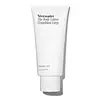What's inside
What's inside
 Key Ingredients
Key Ingredients

 Benefits
Benefits

 Concerns
Concerns

 Ingredients Side-by-side
Ingredients Side-by-side

Water
Skin ConditioningGlycerin
HumectantCaprylic/Capric Triglyceride
MaskingDicaprylyl Carbonate
EmollientShea Butter Glycerides
EmulsifyingSimmondsia Chinensis Seed Oil
EmollientNiacinamide
SmoothingCetearyl Olivate
Cetearyl Alcohol
EmollientGlyceryl Stearate
EmollientSorbitan Olivate
EmulsifyingPalmitoyl Dipeptide-5 Diaminobutyroyl Hydroxythreonine
Skin ConditioningPalmitoyl Dipeptide-5 Diaminohydroxybutyrate
Skin ConditioningPalmitoyl Hexapeptide-12
Skin ConditioningPalmitoyl Tetrapeptide-7
Skin ConditioningPalmitoyl Tripeptide-1
Skin ConditioningSclerocarya Birrea Seed Oil
HumectantCaryodendron Orinocense Seed Oil
EmollientLimnanthes Alba Seed Oil
Skin ConditioningTocopherol
AntioxidantLinoleic Acid
CleansingLinolenic Acid
CleansingPropanediol
SolventPolyacrylate Crosspolymer-6
Emulsion StabilisingCaprylhydroxamic Acid
Caprylyl Glycol
EmollientT-Butyl Alcohol
PerfumingOleic Acid
EmollientPalmitic Acid
EmollientStearic Acid
CleansingWater, Glycerin, Caprylic/Capric Triglyceride, Dicaprylyl Carbonate, Shea Butter Glycerides, Simmondsia Chinensis Seed Oil, Niacinamide, Cetearyl Olivate, Cetearyl Alcohol, Glyceryl Stearate, Sorbitan Olivate, Palmitoyl Dipeptide-5 Diaminobutyroyl Hydroxythreonine, Palmitoyl Dipeptide-5 Diaminohydroxybutyrate, Palmitoyl Hexapeptide-12, Palmitoyl Tetrapeptide-7, Palmitoyl Tripeptide-1, Sclerocarya Birrea Seed Oil, Caryodendron Orinocense Seed Oil, Limnanthes Alba Seed Oil, Tocopherol, Linoleic Acid, Linolenic Acid, Propanediol, Polyacrylate Crosspolymer-6, Caprylhydroxamic Acid, Caprylyl Glycol, T-Butyl Alcohol, Oleic Acid, Palmitic Acid, Stearic Acid
Water
Skin ConditioningOctyldodecyl Myristate
EmollientButylene Glycol
HumectantGlycerin
HumectantHydrogenated Polydecene
EmollientBehenyl Alcohol
EmollientTricaprylin
MaskingHexyldecyl Stearate
EmollientPEG-100 Stearate
Hydrogenated Lecithin
EmulsifyingAloe Barbadensis Leaf Juice
Skin ConditioningButyrospermum Parkii Butter
Skin ConditioningTocopheryl Acetate
AntioxidantSodium Hyaluronate
HumectantDimethicone
EmollientGlyceryl Stearate
EmollientAcrylates/C10-30 Alkyl Acrylate Crosspolymer
Emulsion StabilisingCaprylyl Glycol
EmollientHexylene Glycol
EmulsifyingPetrolatum
EmollientXanthan Gum
EmulsifyingTriethanolamine
BufferingDisodium EDTA
Phenoxyethanol
PreservativePotassium Sorbate
PreservativeCI 19140
Cosmetic ColorantCI 15985
Cosmetic ColorantWater, Octyldodecyl Myristate, Butylene Glycol, Glycerin, Hydrogenated Polydecene, Behenyl Alcohol, Tricaprylin, Hexyldecyl Stearate, PEG-100 Stearate, Hydrogenated Lecithin, Aloe Barbadensis Leaf Juice, Butyrospermum Parkii Butter, Tocopheryl Acetate, Sodium Hyaluronate, Dimethicone, Glyceryl Stearate, Acrylates/C10-30 Alkyl Acrylate Crosspolymer, Caprylyl Glycol, Hexylene Glycol, Petrolatum, Xanthan Gum, Triethanolamine, Disodium EDTA, Phenoxyethanol, Potassium Sorbate, CI 19140, CI 15985
 Reviews
Reviews

Ingredients Explained
These ingredients are found in both products.
Ingredients higher up in an ingredient list are typically present in a larger amount.
Caprylyl Glycol is a humectant and emollient, meaning it attracts and preserves moisture.
It is a common ingredient in many products, especially those designed to hydrate skin. The primary benefits are retaining moisture, skin softening, and promoting a healthy skin barrier.
Though Caprylyl Glycol is an alcohol derived from fatty acids, it is not the kind that can dry out skin.
This ingredient is also used as a preservative to extend the life of products. It has slight antimicrobial properties.
Learn more about Caprylyl GlycolGlycerin is already naturally found in your skin. It helps moisturize and protect your skin.
A study from 2016 found glycerin to be more effective as a humectant than AHAs and hyaluronic acid.
As a humectant, it helps the skin stay hydrated by pulling moisture to your skin. The low molecular weight of glycerin allows it to pull moisture into the deeper layers of your skin.
Hydrated skin improves your skin barrier; Your skin barrier helps protect against irritants and bacteria.
Glycerin has also been found to have antimicrobial and antiviral properties. Due to these properties, glycerin is often used in wound and burn treatments.
In cosmetics, glycerin is usually derived from plants such as soybean or palm. However, it can also be sourced from animals, such as tallow or animal fat.
This ingredient is organic, colorless, odorless, and non-toxic.
Glycerin is the name for this ingredient in American English. British English uses Glycerol/Glycerine.
Learn more about GlycerinGlyceryl Stearate is a mix of glycerin and stearic acid.
It is used to stabilize the mixing of water and oil ingredients. By preventing these ingredients from separating, it can help elongate shelf life. It can also help thicken the product's texture.
As an emollient, it helps soften skin and supports barrier-replenishing ingredients.
In cosmetics, Glyceryl Stearate is often made from vegetable oils or synthetically produced.
This ingredient may not be fungal-acne safe
Fun fact: The human body also creates Glyceryl Stearate naturally.
Learn more about Glyceryl StearateWater. It's the most common cosmetic ingredient of all. You'll usually see it at the top of ingredient lists, meaning that it makes up the largest part of the product.
So why is it so popular? Water most often acts as a solvent - this means that it helps dissolve other ingredients into the formulation.
You'll also recognize water as that liquid we all need to stay alive. If you see this, drink a glass of water. Stay hydrated!
Learn more about Water